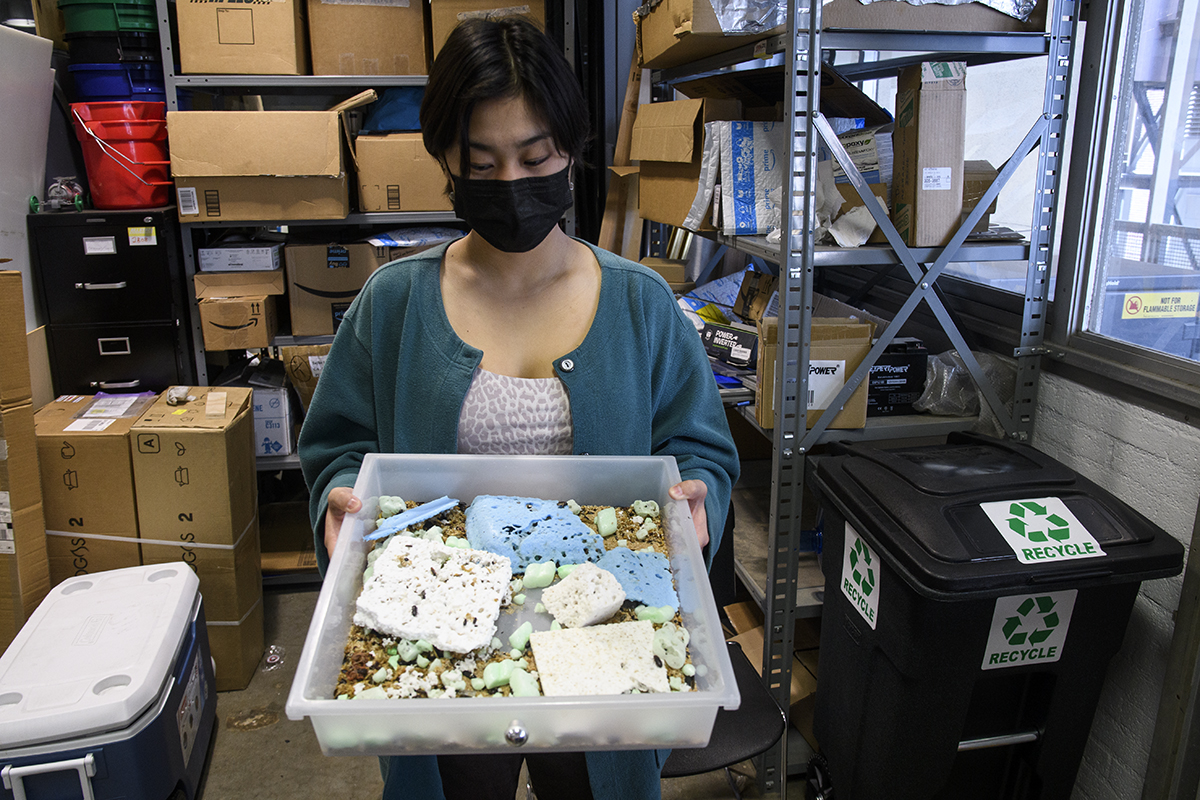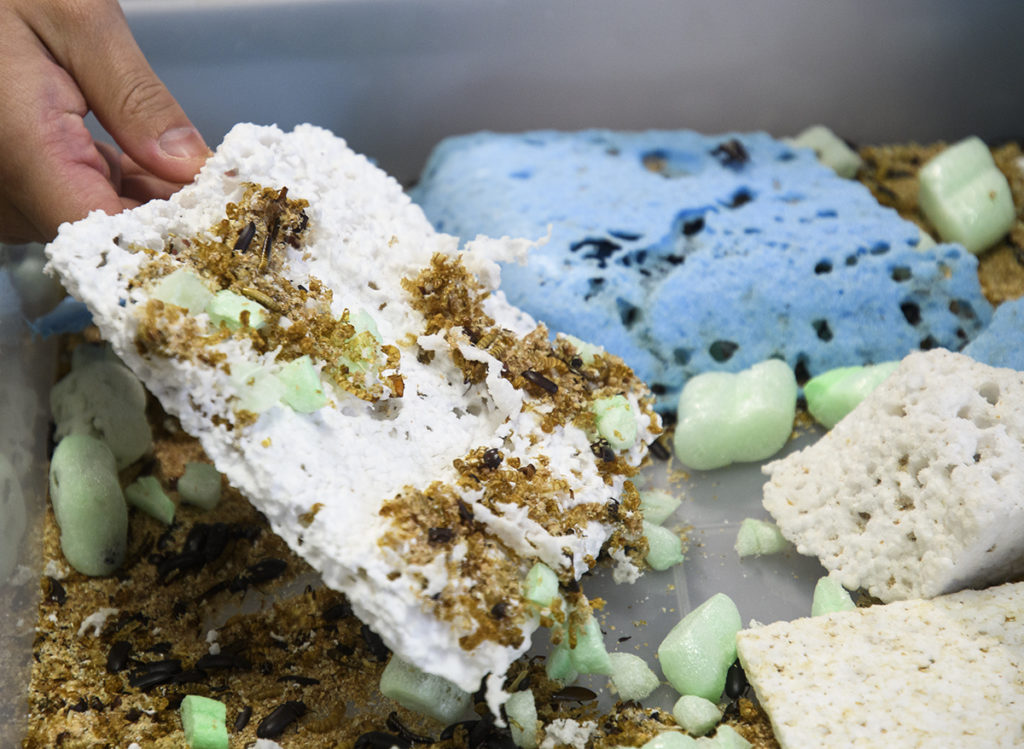Plastic2Food explores sustainable practices to break down plastics

Through research and mealworm farming, Plastic2Food is making an effort to promote sustainability and clean up trash both on and off campus. The club hopes to continue to improve its efficiency in degrading styrofoam and other plastics and eventually create a greenhouse with UCLA Sustainability. (Kyle Kotanchek/Daily Bruin)
By Corinne Chapkis
Feb. 2, 2022 3:55 p.m.
Worms and styrofoam may seem like unlikely solutions to a global plastic pollution crisis, but UCLA’s Plastic2Food finds them to be promising answers.
According to its website, Plastic2Food was created to work toward tackling this issue with the knowledge that 30% of landfill space is taken up by styrofoam and the understanding that mealworms are able to eat and digest this plastic.
Research director Jordan Yanowitz, a fourth-year ecology, behavior and evolution student, said the club began in 2018 as a research project within Bruin Home Solutions, a student organization that supports student-led sustainability initiatives and research on campus. Plastic2Food now works to raise mealworms fed on polystyrene collected through the club’s community cleanups on and off campus. The byproducts of plastics broken down by the worms, such as carbon dioxide and other organic waste, are used to create a system for food growth, according to the club website.
Members in the Los Angeles area now participate in Sunday community cleanups every one to two months during the school year, wearing plastic gloves and carrying trash bags, according to the club’s campus cleanup project guide. The trash is then sorted into organics, recyclables, styrofoam and other plastics. Recyclables are taken to a recycling facility, and biohazards and non-recyclables are sorted out of the collection. Later, styrofoam is fed to the mealworms, each of which can eat about a milligram of plastic per week. The worms’ waste can then be used to make fertilizer.
Plastic2Food grew from four members in 2019 to 40 members today, said co-project manager Ikuko Nakano.
Plastic2Food now meets for weekly in-person general meetings and individual teams also meet weekly for an additional hour to work on their specific projects, with many of them still being held over Zoom.
To improve the efficiency of Zoom meetings during the COVID-19 pandemic, Plastic2Food created smaller teams with various focuses and projects within the club. Yanowitz said his strong interest in plants and preserving nutrients in the fertilizer led him to create Frass2Food. Frass2Food, a project within Plastic2Food, focuses on making the plastic degradation process as safe as possible by analyzing the movement of microplastics in the environment and into mealworm excretion.
Co-project manager Jeremy Goldberg, a fourth-year chemistry student, co-founded the BioOptimization team with the goal of using the worms to degrade as much plastic as possible. Styrofoam has proven to be the most easily digestible for the worms, but they are looking into other possible plastics.
“There are many other plastics that could be even easier broken down,” said BioOptimization co-project manager Ella Winett, a second-year mechanical engineering student. “We just don’t know yet.”

One of the club’s projects involves degrading the styrofoam before feeding it to the worms to increase digestion efficiency. Another includes developing a bioreactor that can forgo passing through the mealworms’ digestive system and get directly into the gut bacteria that degrade the styrofoam.
Plastic2Food hopes to work with UCLA Sustainability to build an aquaponics greenhouse system in the long term, Yanowitz added.
Because of its beginnings in BHS, Plastic2Food is still in the process of formally becoming a campus club. Yanowitz added that club leaders need to coordinate logistics and maneuver red tape before they are able to move forward in establishing the project.
Plastic2Food is now also pursuing goals of helping underserved communities of LA to gain increased access to fresh produce. Nakano’s background minoring in food studies inspired her to look for a facility where the club could degrade the styrofoam plastic and use the fertilizer produced from the mealworms to grow produce to support these communities.
“Produce can then be used to benefit parts of LA that get disproportionately less fresh produce, because that is a large issue in LA,” Nakano said.
In addition, Plastic2Food aims to further address food insecurity by destigmatizing sustainable food sources such as the mealworms themselves, Yanowitz said.
“Once you purge them for a couple of hours, they are nutritious and delicious,” Winett said.
There is plenty of room to improve Plastic2Food’s efficiency and impact in breaking down and recycling plastics, and there remain many possibilities to increase sustainability on campus, Yanowitz added.
“There’s a lot of things that can be done and explored,” Yanowitz said. “It’s really all brand-new science … this is cutting-edge and really important.”

